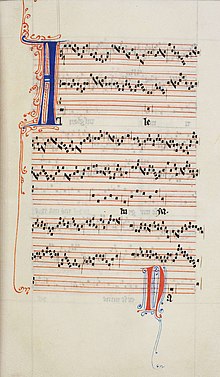The previous post discussed some aspects of Celtic Christianity found in the British Isles that differed from the "mainstream" Rome-based Christianity. There were "local" differences between practices in Ireland and England as well.
Monasteries in Ireland adhered to a much stricter rule than the typical Rule of St. Benedict. Fasting and corporal punishment were more common in Ireland than British monasteries or elsewhere. By the 9th century, most monasteries were conforming to the Benedictine style.
Baptism was also different in Ireland, although we do not have a clear description of it. Bede claims that Augustine of Canterbury found the Irish baptismal rite to be "incomplete" compared to the Roman custom, although what was left out is not explained.
One of the biggest differences was the practice of "Judaizing": observing Jewish rites instead of the newly developing Christian versions. One of the biggest examples was, of course, the observance of Easter on a date more closely conforming to the Jewish Passover. This was one of the main points of contention at the Synod of Whitby. Adhering more closely to laws found in the Old Testament could be a problem. In the mid-8th century, an Irish preacher named Clement Scotus was condemned for heresy, partially because he promoted Old Testament laws such as requiring a man to marry the widow of his brother. Paul's Letter to the Romans in the New Testament made clear that Christians were absolved from following the old law through Christ's sacrifice. Rejecting the Old Testament's list of injunctions and rules was therefore an important part of distinguishing Christianity from Judaism.
Much of what was different about Irish Christianity was inspired by the preaching of Columbanus, and we should talk about him next.
Monasteries in Ireland adhered to a much stricter rule than the typical Rule of St. Benedict. Fasting and corporal punishment were more common in Ireland than British monasteries or elsewhere. By the 9th century, most monasteries were conforming to the Benedictine style.
Baptism was also different in Ireland, although we do not have a clear description of it. Bede claims that Augustine of Canterbury found the Irish baptismal rite to be "incomplete" compared to the Roman custom, although what was left out is not explained.
One of the biggest differences was the practice of "Judaizing": observing Jewish rites instead of the newly developing Christian versions. One of the biggest examples was, of course, the observance of Easter on a date more closely conforming to the Jewish Passover. This was one of the main points of contention at the Synod of Whitby. Adhering more closely to laws found in the Old Testament could be a problem. In the mid-8th century, an Irish preacher named Clement Scotus was condemned for heresy, partially because he promoted Old Testament laws such as requiring a man to marry the widow of his brother. Paul's Letter to the Romans in the New Testament made clear that Christians were absolved from following the old law through Christ's sacrifice. Rejecting the Old Testament's list of injunctions and rules was therefore an important part of distinguishing Christianity from Judaism.
Much of what was different about Irish Christianity was inspired by the preaching of Columbanus, and we should talk about him next.















